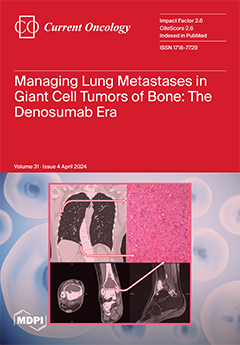The psychosocial outcomes of adolescents and young adults (AYAs) diagnosed with cancer are poorer compared to their peers without cancer. However, AYAs with cancer from diverse racial and ethnic groups have been under-represented in research, which contributes to an incomplete understanding of the psychosocial outcomes of all AYAs with cancer. This paper evaluated the racial and ethnic representation in research on AYAs diagnosed with cancer using observational, cross-sectional data from the large Young Adults with Cancer in Their Prime (YACPRIME) study. The purpose was to better understand the psychosocial outcomes for those from diverse racial and ethnic groups. A total of 622 participants with a mean age of 34.15 years completed an online survey, including measures of post-traumatic growth, quality of life, psychological distress, and social support. Of this sample, 2% (
n = 13) of the participants self-identified as Indigenous, 3% (
n = 21) as Asian, 3% (
n = 20) as “other,” 4% (
n = 25) as multi-racial, and 87% (
n = 543) as White. A one-way ANOVA indicated a statistically significant difference between racial and ethnic groups in relation to
spiritual change, a subscale of post-traumatic growth,
F(4,548) = 6.02,
p < 0.001. Post hoc analyses showed that those under the “other” category endorsed greater levels of spiritual change than those who identified as multi-racial (
p < 0.001, 95% CI = [2.49,7.09]) and those who identified as White (
p < 0.001, 95% CI = [1.60,5.04]). Similarly, participants that identified as Indigenous endorsed greater levels of spiritual change than those that identified as White (
p = 0.03, 95% CI = [1.16,4.08]) and those that identified as multi-racial (
p = 0.005, 95% CI = [1.10,6.07]). We provided an extensive discussion on the challenges and limitations of interpreting these findings, given the unequal and small sample sizes across groups. We concluded by outlining key recommendations for researchers to move towards greater equity, inclusivity, and culturally responsiveness in future work.
Full article






